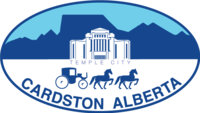Development & Planning
The Cardston Development Office can help you understand how each Bylaw applies to the development that you are wishing to complete. You can call or come in to the Office and the Development Officer will review your plans and help you through the process of applying for the permits or filling out any applications that you will require.
Development Permits
A Development Permit is the first requirement that you will need to complete prior to starting any development within the Town of Cardston. You can apply for a development permit at the Town office, you will need to have a drawing of the development that you want to complete showing all the distances from property lines, all other structures, as well as the height and size of the project. If the development fits the regulations in the Land Use Bylaw and is a permitted use you can receive a Development Permit. Once you have a Development Permit you will need to get a Building Permit.
Building Permits
A Building permit is required prior to you starting any construction within the Town limits. It is obtained from Park Enterprises Ltd. in Lethbridge (the building inspectors that the Town contracts to oversee and inspect construction within the Town limits). To get a Building Permit you will need to have a Development Permit from the Town, two full sets of plans for the development which Park Enterprises will review and if they fit the building codes, they will give you a Building Permit.
Subdivisions
The first step in doing a subdivision is to come into the Town office and speak to the Development Officer to see if the subdivision that you want to do complies with the Bylaws that are in place. The Development Officer will review your plans, and if they fit the Bylaws that are in place, you can get an application form that will need to be submitted to Oldman River Regional Service Commission (ORRSC). You will then need to contract a surveyor to have them draw the plot plan that is needed to complete the subdivision. Once you have all the necessary information, ORRSC will file the application, send letters out to the adjourning land owners, and a public meeting will be set for the Subdivision and Development Authority to review the application and make a decision. If the subdivision plan is approved and not appealed by anyone, ORRSC will file the final subdivision. After Alberta Land Titles accepts the final plan, your surveyor will set the new pins in the property lines and your subdivision will be completed.
